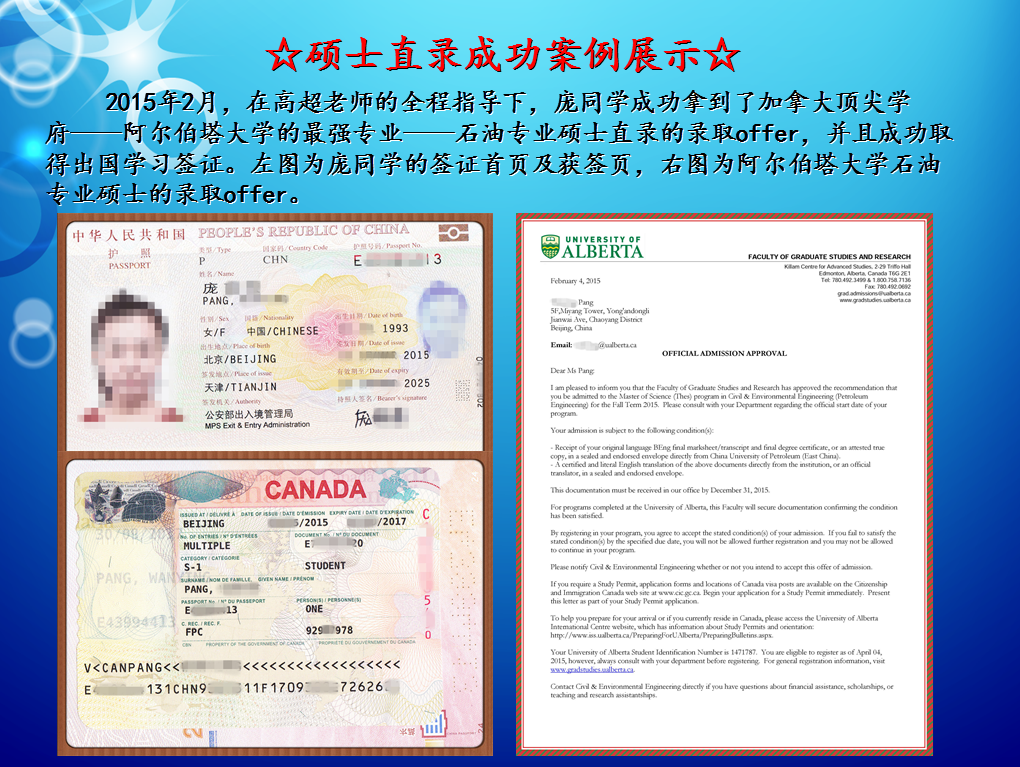GMAT考试阅读辅导(26).
2017-08-11 93阅读
Passage 26
In choosing a method for determining climatic conditions that existed in the past, paleoclimatologists invoke four principal criteria. First, the material---rocks, lakes, vegetation, etc—on which the method relies must be (5) widespread enough to provide plenty of information,since analysis of material that is rarely encountered will not permit correlation with other regions or with other periods of geological history. Second, in the process of formation, the material must have received an environ-(10) mental signal that rlects a change in climate and that can be deciphered by modern physical or chemical means. Third, at least some of the material must have retained the signal unaffected by subsequent changes in the environment. Fourth, it must be possible to deter-(15) mine the time at which the inferred climatic conditionsheld. This last criterion is more easily met in dating marine sediments, because dating of only a small number of layers in a marine sequence allows the age of other layers to be estimated fairly reliably by extrapola-(20) tion and interpolation. By contrast, because sedimentation is much less continuous in continental regions, estimating the age of a continental bed from the known ages of beds above and below is more risky.
One very old method used in the investigation of past (25) climatic conditions involves the measurement of water levels in ancient lakes. In temperate regions, there areenough lakes for correlations between them to give us a reliable picture. In arid and semiarid regions, on the other hand, the small number of lakes and the great (30) distances between them reduce the possibilities for correlation. Moreover, since lake levels are controlled by rates of evaporation as well as by precipitation, the interpretation of such levels is ambiguous. For instance, the fact that lake levels in the semiarid southwestern United (35) States appear to have been higher during the last ice age than they are now was at one time attributed to increased precipitation. On the basis of snow-line elevations, however, it has been concluded that the climatethen was not necessarily wetter than it is now, but rather (40) that both summers and winters were cooler, resulting in reduced evaporation.
Another problematic method is to reconstruct former climates on the basis of pollen profiles. The type of vegetation in a specific region is determined by identifying (45) and counting the various pollen grains found there.Although the relationship between vegetation and climate is not as direct as the relationship between climate and lake levels, the method often works well inthe temperate zones. In arid and semiarid regions in (50) which there is not much vegetation, however, small changes in one or a few plant types can change the picture dramatically, making accurate correlations between neighboring areas difficult to obtain.
1. Which of the following statements about the difference between marine and continental sedimentation is supported by information in the passage?
(A) Data provided by dating marine sedimentation is more consistent with researchers’ findings in other disciplines than is data provided by dating continental sedimentation.
(B) It is easier to estimate the age of a layer in a sequence of continental sedimentation than it is to estimate the age of a layer in a sequence of marine sedimentation.
(C) Marine sedimentation is much less widespread than continental sedimentation.
(D) Researchers are more often forced to rely on extrapolation when dating a layer of marine sedimentation than when dating a layer of continental sedimentation.
(E) Marine sedimentation is much more continuous than is continental sedimentation.
2. Which of the following statements best describes the organization of the passage as a whole?
(A) The author describes a method for determining past climatic conditions and then offers specific examples of situations in which it has been used.
(B) The author discusses the method of dating marine and continental sequences and then explains how dating is more difficult with lake levels than with pollen profiles.
(C) The author describes the common requirements of methods for determining past climatic conditions and then discusses examples of such methods.
(D) The author describes various ways of choosing a material for determining past climatic conditions and then discusses how two such methods have yielded contradictory data.
(E) The author describes how methods for determining past climatic conditions were first developed and then describes two of the earliest known methods.
3. It can be inferred from the passage that paleoclimatologists have concluded which of the following on the basis of their study of snow-line elevations in the southwestern United States?
(A) There is usually more precipitation during an ice age because of increased amounts of evaporation.
(B) There was less precipitation during the last ice age than there is today.
(C) Lake levels in the semiarid southwestern United States were lower during the last ice age than they are today.
(D) During the last ice age, cooler weather led to lower lake levels than paleoclimatologists had previously assumed.
(E) The high lake levels during the last ice age may have been a result of less evaporation rather than more precipitation.
4. Which of the following would be the most likely topic for a paragraph that logically continues the passage?
(A) The kinds of plants normally found in arid regions
(B) The fect of variation in lake levels on pollen distribution
(C) The material best suited to preserving signals of climatic changes
(D) Other criteria invoked by paleoclimatologists when choosing a method to determine past climatic conditions
(E) A third method for investigating past climatic conditions
5. The author discusses lake levels in the southwestern United States in order to
(A) illustrate the mechanics of the relationship between lake level, evaporation, and precipitation
(B) provide an example of the uncertainty involved in interpreting lake levels
(C) prove that there are not enough ancient lakes with which to make accurate correlations
(D) explain the fects of increased rates of evaporation on levels of precipitation
(E) suggest that snow-line elevations are invariably more accurate than lake levels in determining rates of precipitation at various points in the past
6. It can be inferred from the passage that an environmental signal found in geological material would not be usul to paleoclimatologists if it
(A) had to be interpreted by modern chemical means
(B) rlected a change in climate rather than a long-term climatic condition
(C) was incorporated into a material as the material was forming
(D) also rlected subsequent environmental changes
(E) was contained in a continental rather than a marine sequence
7. According to the passage, the material used to determine past climatic conditions must be widespread for which of the following reasons?Ⅰ.Paleoclimatologists need to make comparisons between periods of geological history.
Ⅱ. Paleoclimatologists need to compare materials that have supported a wide variety of vegetation.
Ⅲ. Paleoclimatologists need to make comparisons with data collected in other regions.
(A) Ⅰ only
(B) Ⅱ only
(C) Ⅰ and Ⅱ only
(D) Ⅰ and Ⅲ only
(E) Ⅱ and Ⅲ only
8. Which of the following can be inferred from the passage about the study of past climates in arid and semiarid regions?
(A) It is sometimes more difficult to determine past climatic conditions in arid and semiarid regions than in temperate regions.
(B) Although in the past more research has been done on temperate regions, paleoclimatologists have recently turned their attention to arid and semiarid regions.
(C) Although more information about past climates can be gathered in arid and semiarid than in temperate regions, dating this information is more difficult.
(D) It is difficult to study the climatic history of arid and semiarid regions because their climates have tended to vary more than those of temperate regions.
(E) The study of past climates in arid and semiarid regions has been neglected because temperate regions support a greater variety of plant and animal life.
留学咨询
更多出国留学最新动态,敬请关注澳际教育手机端网站,并可拨打咨询热线:400-601-0022
留学热搜
相关推荐
- 专家推荐
- 成功案例
- 博文推荐

Copyright 2000 - 2020 北京澳际教育咨询有限公司
www.aoji.cn All Rights Reserved | 京ICP证050284号
总部地址:北京市东城区 灯市口大街33号 国中商业大厦2-3层









高国强 向我咨询
行业年龄 12年
成功案例 3204人
留学关乎到一个家庭的期望以及一个学生的未来,作为一名留学规划导师,我一直坚信最基本且最重要的品质是认真负责的态度。基于对学生和家长认真负责的原则,结合丰富的申请经验,更有效地帮助学生清晰未来发展方向,顺利进入理想院校。
Amy GUO 向我咨询
行业年龄 17年
成功案例 4539人
一切的一切从现在开始.用自己的态度闯出一片天
薛占秋 向我咨询
行业年龄 11年
成功案例 1869人
从业3年来成功协助数百同学拿到英、美、加、澳等各国学习签证,递签成功率90%以上,大大超过同业平均水平。
Tara 向我咨询
行业年龄 7年
成功案例 1869人